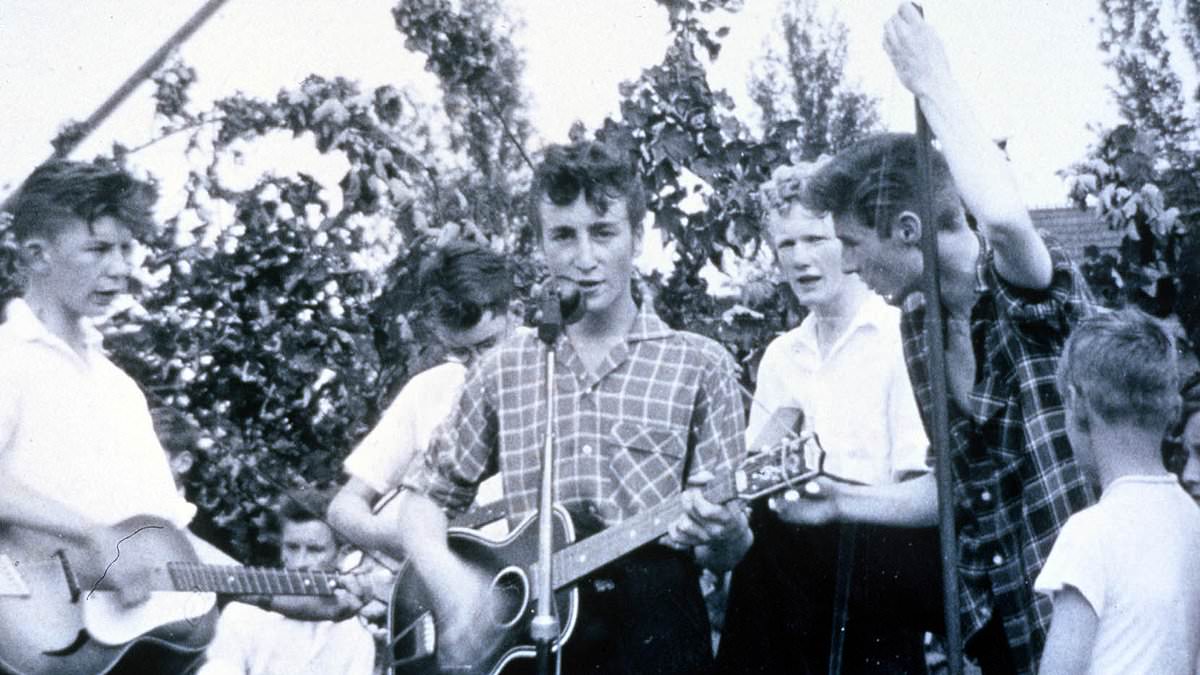QUESTION: Did George Harrison ever write songs in collaboration with Lennon or McCartney?
In the late 1950s, John Lennon formed a skiffle group called the Quarrymen, named after his school. The line-up featured John on guitar with Paul McCartney and George Harrison, John ‘Duff’ Lowe on piano, and Colin Hanton on drums.
After rehearsing at McCartney’s house, they booked a recording session at Percy Phillips’ studio at 38 Kensington, Liverpool, in July 1958 and recorded In Spite Of All The Danger, a song credited to McCartney and Harrison. They could afford only one copy of the 10in disc, so they agreed to share it, with each member keeping it for a week. Lowe ended up keeping it for 23 years.
When he rediscovered it in 1981, he contacted McCartney, who bought it from him for an undisclosed fee. It was eventually released on The Beatles Anthology 1 in 1995.
After several changes in their line-up, the Quarrymen evolved into The Beatles. Over recent years, McCartney has played In Spite Of All The Danger on concert dates, much to the delight of his fans.
Trevor J. Halliday, Liverpool
There are three Beatles tracks where George Harrison (along with Ringo Starr) has joint credit for composition with Lennon and McCartney. None is among the group’s finer efforts.
Two are from Let It Be (1970): Dig It, taken from a throwaway Lennon composition, and Maggie Mae, where all four are credited as arrangers of the old Liverpool ballad. The other track, Flying, is a pleasant but unremarkable instrumental written for the Magical Mystery Tour film.
Harrison felt under-appreciated musically: it was McCartney who played the stunning guitar solo on Harrison’s Taxman, effectively hijacking Harrison’s role as lead guitarist. During the Let It Be sessions, a tense conversation culminated in Harrison saying to McCartney: ‘I’ll play… whatever you want me to play. Or I won’t play at all, if you don’t want me to play. Whatever it is that will please you, I’ll do it.’
At another stage, Harrison wrote the song Wah-Wah to express his conflicted views about the fame Lennon and McCartney had brought him, which contrasted with his feeling that, after all this time, he was still the third wheel.
Many of Harrison’s songs never saw the light of day as Beatles numbers, which gave him a rich source for his monumental first solo album, All Things Must Pass (generally considered as good as any of the solo albums by Lennon or McCartney).
Bob Bell, Croydon, Surrey
QUESTION: Is all ‘new’ architecture today stolen?
While contemporary architecture often draws inspiration from historical styles and cultures, and existing designs, it also incorporates innovative materials, concepts and technologies. This blend of old and new should be seen as an evolution rather than theft. To take some modern examples: The Shard, designed by Renzo Piano, was inspired by the gothic spires of London’s historic churches and the masts of tall ships depicted by the painter Canaletto. Using modern glass and steel, he has created a distinctly contemporary building.
Q: In the 1960s, when we saw an ambulance we had to hold our collars until we saw a dog. My husband and I still do this today. Does anyone else do this? And why?
Sue Jones, Birmingham
Q: I’m a keen racegoer but I’ve never seen a jockey with a moustache or beard. Is there a reason for this?
Cliff Bridge, Beaumaris, Anglesey
The Burj Khalifa in Dubai, designed by Adrian Smith, draws inspiration from traditional Islamic architecture. Its design incorporates the spiral minaret style while using cutting-edge materials and technologies.
Architectural creativity lies in the adaptation and reinterpretation of influences to create unique and contextually relevant buildings. Intellectual property laws also guide architects in respecting originality and preventing outright copying.
Thus, modern architecture is a complex interplay of homage, innovation and originality.
S. K. Lewin, London N5
QUESTION: Who were the first ethnic minority MPs?
Ethnicity is subjective and subject to changing interpretations.
The first MP from what we would consider to be an ‘ethnic minority’ background may have been John Stewart, MP for Lymington, Hampshire, in 1832-47, whose father owned plantations in the West Indies. David Ochterlony Dyce Sombre, MP for Sudbury 1841-2, was of mixed European and Indian descent. His election was annulled due to corruption.
The first MP with full ethnic-minority origins was Dadabhai Naoroji, a professor at University College London, who was born in Mumbai. Naoroji was a critic of British rule in India and was elected Liberal MP for Central Finsbury, London, in 1892. Prominent pro-British Indians decided to put up their own candidate, Mancherjee Bhownaggree, who was elected MP for Bethnal Green North East, London, in 1895.
Olivia Simmons, Guildford, Surrey
